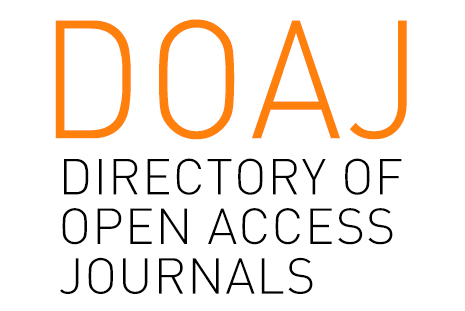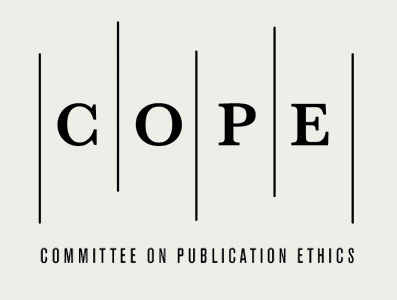Non-formal interviews as model interfaces: A case for deep learning in workplace instructional design research
Roberto Rojas-Alfaro, Salt Lake Community College, Salt Lake City, Utah, USA, e-mail: roberto.rojas-alfaro@slcc.edu
Иновације у настави, XXXVIII, 2025/1, стр. 27–45
| PDF | | Extended summary PDF |
DOI: 10.5937/inovacije2501027R
Summary: This paper introduces non-formal interviews as a method of qualitative data collection in instructional design research (IDR), particularly in workplace-based lifelong learning interventions. Drawing on case study and autoethnographic reflection on prior research with Costa Rican airport customs officers learning vocational English, the paper theorizes and describes how non-formal interviews capture the real-time complexities of workplace language use and communication in ways that formal interviews can miss due to their reliance on retrospective participant reflection. By combining the techniques of observational conversations, shadowing, and researcher-participant collaboration explicitly lensed through a study’s research questions, non-formal interviews capture detailed, real-time insights into emergent workplace behaviors, communication challenges, and learning opportunities. These insights complement formal interviews and provide richer data to inform more effective IDR interventions that support workplace communication, language acquisition, and behavior change.
This study identifies four key advantages of non-formal interviews as model interfaces for vocational language learning in IDR. First, they offer direct, real-time access to workplace behaviors and interactions. Second, by minimizing the reflective buffer of formal interviews, they capture more immediate and authentic onsite language use. Third, their flexibility allows researchers to document language adaptation as it happens in response to workplace demands. Finally, they accommodate data collection to the shifting linguistic and behavioral needs of dynamic work environments. These findings underscore the potential of non-formal interviews to enhance workplace learning interventions by grounding instructional design in actual workplace practices. The paper concludes with recommendations for integrating non-formal interviews into IDR methodologies, emphasizing their anability to support behavior-driven, context-sensitive, and adaptive learning strategies. By formalizing a structured yet flexible approach to workplace-based qualitative inquiry, non-formal interviews bridge structured qualitative interviews and participant observation, ensuring that instructional design research captures workplace learning as it unfolds in real time. A fourfold framework for implementing non-formal interviews in IDR is also discussed.
Keywords: instructional design research, occupational English, non-formal interview, shadowing, airport customs
Роберто Рохас-Алфаро
Виша школа у Солт Лејку,
Солт Лејк Сити, Јута, САД
НЕФОРМАЛНИ ИНТЕРВЈУ КАО ИНТЕРФЕЈС МОДЕЛ:
ПРИМЕР ДУБОКОГ УЧЕЊА У ИСТРАЖИВАЊУ ИНСТРУКЦИОНОГ ДИЗАЈНА
ЗА ПОТРЕБЕ ЗАПОСЛЕНИХ
У овом раду испитују се неформални интервјуи као метод за квалитативно прикупљање података у истраживању инструкционог дизајна (енг. Instructional Design Research – IDR), нарочито у контексту целоживотног учења на радном месту. Традиционалне квалитативне методе, као што је формални интервју, ослањају се на ретроспективна размишљања, која могу да прикрију сложеност учења на радном месту и промене понашања у реалном времену. У овом истраживању предлаже се неформални интервју као модел за стицање непосредних, контекстуално осетљивих увида у употребу језика на радном месту, изазове у комункацији и међусобну интеракцију запослених. Ослањајући се на студију случаја о курсу стручног енглеског језика за царинике на аеродрому у Костарики, у раду испитујемо како истраживање у реалном времену може да побољша методологије инструкционог дизајна за обуку на радном месту.
Утемељена на критичком квалитативном истраживању (Creswell, 2013), ова студија доводи дискусију о истраживању инструкционог дизајна на нови ниво (Shernoff et al., 2020), истичући дубоко учење у професионалном окружењу (Jones & Sharma, 2021). Учење на радном месту захтева динамичне интервенције које су вођене понашањем (Gunderson, 1999; Bello- Bravo et al., 2022). Међутим, постојећe методологије истраживања инструкционог дизајна у великој мери ослањају се на формалне интервјуе који доводе до рефлективног застоја – јаза између самог догађаја и онога чега се учесници сећају (Seidman, 2013). Ово кашњење може да замагли спонтане увиде до којих се дошло у тренутку, на лицу места, који су важни за уочавање изазова у учењу у стварном времену. Наше истраживање у складу је са истраживањима која наглашавају неопходност флексибилних и прилагодљивих метода прикупљања података у професионалном окружењу (Lobe et al., 2020) и надовезује се на раније радове о учењу на радном месту (Holland, 2019).
Користећи аутоетнографску студију случаја (Ellis et al., 2011), аутор овог рада је поново прегледао претходна истраживања о аеродромским цариницима у Костарики који сваког дана комуницирају са путницима који говоре енглески језик, али им недостаје формално учење енглеског језика струке (Rojas-Alfaro, 2021). Неформални интервјуи коришћени су за документовање стратегија комуникације на радном месту и прилагођавање кроз:
- Праћење – Посматрање царинских службеника док обављају радне задатке, комуницирају са путницима, испуњавају захтеве које им радно место намеће, мапирање коришћења страног језика у стварном времену.
- Oпсервацијске разговоре – Ситуациони, неформални дијалози са царинским службеницима који подстичу на тренутно размишљање о језичким препрекама и потребама у погледу обуке.
- Сарадњу учесника и истраживача – Прилагођавање фокуса истраживања као одговор на постојећу стварност на радном месту, омогућавање царинским службеницима да заједно конструишу знање о употреби страног језика на радном месту и предлажу решења за обуку.
- Кроз овакву интеграцију неформални интервјуи повезују структуриране интервјуе са уграђеним етнографским методама (Hamada, 2019), побољшавајући квалитативне увиде, еколошку валидност и инструкционе интервенције прилагођене професионалним потребама.
Истраживањем су идентификоване четири кључне могућности које неформални интервјуи пружају у погледу инструкционог дизајна на радном месту:
- Прикупљање података у стварном времену – За разлику од формалних интервјуа, који се ослањају на памћење, неформални интервјуи „хватају” динамику радног места из трена у трен, пружајући јасну слику о томе како се обављају радни задаци и како се користи језик.
- Смањење рефлективног застоја – Постављањем питања док се обавља одређени задатак (нпр. „Зашто сте то управо урадили?”) добијају се одговори засновани на непосредном искуству на радном месту, а спречавају накнадне рационализације.
- Прилагођавање специфичностима радног места – Неформални интервјуи узимају у обзир динамику окружења, документујући језичка прилагођавања као одговор на захтеве радног места и професионалну праксу која се развија.
- Увиди стечени на основу одговора учесника – Путем праћења и учествовања у разговору учесници су активно обликовали истраживачки процес, бацајући светло на хитне потребе у погледу обуке из стручног енглеског језика које би у формалним интервјуима можда остале неоткривене.
Како би боље научили енглески језик, цариници су се често ослањали на неформалне стратегије учења, као што су разговор са колегама и спонтано играње улога са путницима. Ови налази наглашавају потребу за моделима инструкционог дизајна који подржавају учење на радном месту у реалном времену, уместо ослањања на унапред припремљену обуку која се заснива на раду у учионици. Праћење и опсервациони разговори пружају суштинске повратне информације за усавршавање програма обуке, обезбеђујући већу релевантност и ангажованост.
Поред тога, у раду се наглашава етичка димензија истраживања у реалном времену у инструкционом дизајну, уз истицање да транспарентност, ангажованост учесника
и академски интегритет морају да буду од највећег значаја како би се осигурало да се приликом прикупљања података поштују професионалне границе, а да стечени увиди буду применљиви. Формализујући структурирани, али флексибилни, приступ неформалним интервјуима, ово истраживање пружа методички модел који може да се прилагођава другим
контекстима учења на радном месту, чиме се обезбеђује да истраживање инструкционог дизајна и даље одговара професионалним изазовима у стварном свету.
Кључне речи: истраживање инструкционог дизајна, енглески језик струке, неформални интервју, праћење, царинска служба на аеродрому
References:
- Abudulai, M., Seini, S. S., Haruna, M., Mohammed, A. M., & Stephen, K. A. (2016). Farmer participatory pest management evaluations and variety selection in diagnostic farmer field Fora in cowpea in Ghana. African Journal of Agricultural Research, 1(19), 1765–1771. https://doi.org/10.5897/AJAR2016.10887
- Adhabi, E., & Anozie, C. B. (2017). Literature review for the type of interview in qualitative research. International Journal of Education, 9(3), 86–97. https://doi.org/10.5296/ije.v9i3.11483
- Anderson, K. T., & Holloway-Libell, J. (2014). A Review of “Interviewing as Qualitative Research: A Guide for Researchers in Education and the Social Sciences”. The Journal of Educational Research, 107(5), 428. https://doi.org/10.1080/00220671.2014.938514
- Ashby, W. R. (1957). An introduction to cybernetics. Chapman & Hall, Ltd.
- Bello-Bravo, J., Diaz, R., Venugopal, S., Viswanathan, M., & Pittendrigh, B. R. (2010). Expanding the impact of practical scientific concepts for low-literate learners through an inclusive and participatory virtual knowledge ecosystem. Journal of the World Universities Forum, 3(4), 147–164. https://doi.org/10.18848/1835-2030/CGP/v03i04/5669
- Bello-Bravo, J., Medendorp, J., & Pittendrigh, B. R. (2022). Just participation or just participation? A participatory justice model for more successful theory of change design, implementation, and solution uptake. Heliyon, 8(7), e09808. https://doi.org/10.1016/j.heliyon.2022.e09808
- Bonilla Lynch, Á., & Rojas Alfaro, R. (2012). El aprendizaje de lenguas extranjeras como herramienta para el desarrollo humano. Proceedings of the Congreso Iberoamericano de Las Lenguas En La Educación y En laCultura / IV Congreso Leer.Es (pp. 1–11). Organización de los Estados Iberoamericanos.
- Box, G. E. (1976). Science and statistics. Journal of the American Statistical Association, 71(356), 791–799. https://doi.org/10.1080/01621459.1976.10480949
- Box, G. E. (1979). Robustness in the strategy of scientific model building. In R. L. Launer, & G. N. Wilkinson (Eds.). Robustness in Statistics (pp. 201–236). Academic Press. https://doi.org/0.1016/B978-0-12-438150-6.50018-2
- Box, G. E., & Draper, N. R. (1987). Empirical model-building and response surfaces. John Wiley & Sons.
- Burgess, R. G. (1982). The unstructured interview is a conversation. In R. G. Burgess (Ed.). Field Research: A Sourcebook and Field Manual (pp. 177–182). Routledge.
- De Lucas Ancillo, A., Del Val Núñez, M. T., & Gavrila, S. G. (2021). Workplace change within the COVID-19 context: a grounded theory approach. Economic research, 34(1), 2297–2316. https://doi.org/10.1080/1331677X.2020.1862689
- Denzin, N. K. (1970). Strategies of multiple triangulation. In The research act in sociology: A theoretical introduction to sociological method (pp. 297–313). Aldine Transaction.
- Ellis, C., Adams, T. E., & Bochner, A. P. (2011). Autoethnography: an overview. Historical Social Research, 36(4), 273–290. https://doi.org/10.12759/hsr.36.2011.4.273-290
- Fielding, N. G. (2012). Triangulation and mixed methods designs: Data integration with new research technologies. Journal of Mixed Methods Research, 6(2), 124–136. https://doi.org/10.1177/1558689812437101
- Freynet, N., & Clément, R. (2019). Perceived accent discrimination: Psychosocial consequences and perceived legitimacy. Journal of Language and Social Psychology, 38(4), 496–513. https://doi.org/10.1177/0261927X19865775
- Geertz, C. (2008). Thick description: Toward an interpretive theory of culture. In T. Oakes, & P. L. Price (Eds.). The cultural geography reader (pp. 41–51). Routledge.
- Gerber, E. (2009). Using improvisation to enhance the effectiveness of brainstorming. In D. R. Olsen & R. B. Arthur (Eds.). Proceedings of the SIGCHI Conference on Human Factors in Computing Systems (pp. 97–104). Association for Computing Machinery. https://doi.org/10.1145/1518701.1518718
- Goswami, R., Roy, K., Dutta, S., Ray, K., Sarkar, S., Brahmachari, K., Nanda, M. K., Mainuddin, M., Banerjee, H., & Timsina, J. (2021). Multi-faceted impact and outcome of COVID-19 on smallholder agricultural systems: Integrating qualitative research and fuzzy cognitive mapping to explore resilient strategies. Agricultural Systems, 189, 103051. https://doi.org/10.1016/j.agsy.2021.103051
- Gunderson, L. (1999). Resilience, flexibility and adaptive management – Antidotes for spurious certitude? Conservation Ecology, 3(1), 7. https://doi.org/10.5751/ES-00089-030107
- Haggerty, K. D. (2003). Review essay: Ruminations on reflexivity. Current Sociology, 51(2), 153–162. https://doi.org/10.1177/00113921030512007
- Hamada, Y. (2019). Shadowing: What is it? How to use it. Where will it go? RELC Journal, 50(3), 386–393. https://doi.org/10.1177/0033688218771380
- Henningsen, D. D., & Henningsen, M. L. M. (2018). Does brainstorming promote cohesiveness? How the rules of brainstorming mirror symbolic convergence. Communication reports, 31(2), 103–114. https://doi.org/10.1080/08934215.2017.1394476
- Heron, J. (1982). Experiential training techniques. Human Potential Research Project, University of Surrey.
- Heron, J., & Reason, P. (2008). Extending epistemology within a co-operative inquiry. In P. Reason, & H. Bradbury (Eds.). The Sage handbook of action research: Participative inquiry and practice, Vol. 2 (pp. 366–380). Sage.
- Holland, A. A. (2019). Effective principles of informal online learning design: A theory-building metasynthesis of qualitative research. Computers & Education, 128, 214–226. https://doi.org/10.1016/j.compedu.2018.09.026
- Javadi-Pashaki, N., & Darvishpour, A. (2020). The review of theoretical sensitivity and reflexivity concepts in qualitative research. Journal of Qualitative Research in Health Sciences, 8(2), 57–65.
- Jones, K. A., & Sharma, R. S. (2021). The learning model. In K. A. Jones, & R. S. Sharma (Eds.). Higher education 4.0 (pp. 89–101). Springer. https://doi.org/10.1007/978-981-33-6683-1_4
- Korzybski, A. (1933). Science and sanity: An introduction to non-Aristotelian systems and general semantics. Institute of General Semantics.
- Lamb, D. (2021). A phenomenological study examining how the COVID-19 pandemic changed the way teachers use technology to deliver instruction from March 2020 – May 2021 (unpublished doctoral dissertation). East Tennessee State University. https://dc.etsu.edu/etd/3975
- Lambert, S. D., & Loiselle, C. G. (2008). Combining individual interviews and focus groups to enhance data richness. Journal of Advanced Nursing, 62(2), 228–237. https://doi.org/10.1111/j.1365-2648.2007.04559.x
- Lines, R. L., Pietsch, S., Crane, M., Ntoumanis, N., Temby, P., Graham, S., & Gucciardi, D. F. (2021). The effectiveness of team reflexivity interventions: A systematic review and meta-analysis of randomized controlled trials. Sport, Exercise, and Performance Psychology, 10(3), 438–473. https://doi.org/10.1037/spy0000251
- Lippi-Green, R. (1997). English with an accent: Language, ideology, and discrimination in the United States. Routledge.
- Lobe, B., Morgan, D., & Hoffman, K. A. (2020). Qualitative data collection in an era of social distancing. International Journal of Qualitative Methods, 19, 1–8. https://doi.org/10.1177/1609406920937875
- Lu, X. (2010). Automatic analysis of syntactic complexity in second language writing. International journal of corpus linguistics, 15(4), 474–496. https://doi.org/10.1075/ijcl.15.4.02lu
- Lutomia, A. N., Bello-Bravo, J., Lutomia, N. I., Kataru, J. K., Medendorp, J. W., & Pittendrigh, B. R. (2024). Participatory practices and lessons from Scientific Animations Without Borders and a WhatsApp network in a post-COVID age: The case of video animations for rural agriculture. In A. Chowdhury, & G. A. Gow (Eds.). Digital communication for agricultural and rural development (pp. 253–270). Routledge.
- Maturana, H. R., & Varela, F. J. (1987). The tree of knowledge: The biological roots of human understanding. Shambhala.
- Abbe, A., & Brandon, S. E. (2014). Building and maintaining rapport in investigative interviews. Police Practice and Research, 15(3), 207–220. https://doi.org/10.1080/15614263.2013.827835
- Mills, J. (2010). Self-construction through conversation and narrative in interviews. Educational Review, 53(3), 285–301. https://doi.org/10.1080/00131910120085883
- Moscoso, S. (2000). Selection interview: A review of validity evidence, adverse impact and applicant reactions. International Journal of Selection and Assessment, 8(4), 237–247. https://doi.org/10.1111/1468-2389.00153
- Nunkoosing, K. (2005). The problems with interviews. Qualitative Health Research, 15(5), 698–706. https://doi.org/10.1177/1049732304273903
- Olson, L. J. (2015). Interview as conversation: Agency and self-construction in a Russian rural woman’s story of courtship and marriage. In M. Ilic, & D. Leinarte (Eds.). The Soviet past in the post-socialist present: Methodology and ethics in Russian, Baltic and Central European oral history and memory studies (pp. 51–68). Routledge.
- Partington, G. (2001). Qualitative research interviews: Identifying problems in technique. Issues in Educational Research, 11(2), 32–44.
- Pask, G. (1976). Conversation theory: Applications in education and epistemology. Elsevier.
- Paulus, P. B., & Kenworthy, J. B. (2019). Effective brainstorming. In P. B. Paulus, & B. A. Nijstad (Eds.). Handbook of Group Creativity: Innovation Through Collaboration (pp. 287–386). Oxford University Press.
- Richards, L. (2013). Difference-making from a cybernetic perspective: The role of listening and its circularities. Cybernetics & Human Knowing, 20(1–2), 59–68.
- Richards, L. (2019). Understanding, Design, Models, Dialogue: The Orienting Role of Language. She Ji: The Journal of Design, Economics, and Innovation, 5(4), 369–372. https://doi.org/10.1016/j.sheji.2019.11.008
- Rojas-Alfaro, R. (2021). Spoken English at airport/border control customs: Designing and evaluating an interactive model for occupational English with adult second language learners on the go (Doctoral dissertation). University of Illinois at Urbana-Champaign.
- Rojas-Alfaro, R., & Chen, D. (2019). Motivations for the use of English on customs officers’ work performance. Journal of Organizational Psychology, 19(3), 10–23. https://doi.org/10.33423/jop.v19i3.2141
- Roulston, K. (2019). Epistemology and interviews. Oxford Research Encyclopedia of Education (n.p.). Oxford University Press. https://doi.org/10.1093/acrefore/9780190264093.013.551
- Schaeffer, N. C. (2004). Conversation with a purpose or conversation? Interaction in the standardized interview. In P. P. Biermer, R. M. Groves, L. E. Lyberg, N. A. Mathiowetz, & S. Sudman (Eds.). Measurement errors in surveys (pp. 365–391). John Wiley & Sons.
- Scott, C., & Medaugh, M. (2017). Types of observers. In C. S. Davis, & R. E. Potter (Eds.). The international encyclopedia of communication research methods (pp. 1–5). John Wiley & Sons, Inc.
- Seidman, I. (1991). Interviewing as qualitative research: A guide for researchers in education and the social sciences. Teachers College Press.
- Seidman, I. (2013). Interviewing as qualitative research: A guide for researchers in education and the social sciences (4th ed.). Teachers College Press.
- Shaikh, J. R., & Patil, M. (2020). Qualitative tests for preliminary phytochemical screening: An overview. International Journal of Chemical Studies, 8(2), 603–608. https://doi.org/10.22271/chemi.2020.v8.i2i.8834
- Shannon, C., & Weaver, W. (1949). The mathematics of communication. Scientific American, 181(1), 11–15.
- Sherif, B. (2001). The ambiguity of boundaries in the fieldwork experience: Establishing rapport and negotiating insider/outsider status. Qualitative Inquiry, 7(4), 436–447. https://doi.org/10.1177/107780040100700403
- Shernoff, E. S., Von Schalscha, K., Gabbard, J. L., Delmarre, A., Frazier, S. L., Buche, C., & Lisetti, C. (2020). Evaluating the usability and instructional design quality of Interactive Virtual Training for Teachers (IVT-T). Educational Technology Research and Development, 68(6), 3235–3262. https://doi.org/10.1007/s11423-020-09819-9
- Taylor, P. J. (2010). Unruly complexity: Ecology, interpretation, engagement. University of Chicago Press.
- Tennyson, R. D., & Park, O. C. (1980). The teaching of concepts: A review of instructional design research literature. Review of Educational Research, 50(1), 55–70. https://doi.org/10.3102/00346543050001055
- Thurmond, V. A. (2001). The point of triangulation. Journal of Nursing Scholarship, 33(3), 253–258. https://doi.org/10.1111/j.1547-5069.2001.00253.x
- Van Biljon, J. (2011). A critical review on the reporting of surveys in transdisciplinary research: A case study in Information Systems. TD: The Journal for Transdisciplinary Research in Southern Africa, 7(2), 337–350.
- Vaughn, S., Schumm, J. S., & Sinagub, J. M. (1996). Focus group interviews in education and psychology. Sage.
- Webb, C., & Kevern, J. (2001). Focus groups as a research method: a critique of some aspects of their use in nursing research. Journal of Advanced Nursing, 33(6), 798–805. https://doi.org/10.1046/j.1365-2648.2001.01720.x
- Webber-Ritchey, K. J., Simonovich, S. D., & Spurlark, R. S. (2021). COVID-19: Qualitative research with vulnerable populations. Nursing Science Quarterly, 34(1), 13–19. https://doi.org/10.1177/0894318420965225
- Williams, M., & Moser, T. (2019). The art of coding and thematic exploration in qualitative research. International Management Review, 15(1), 45–55.
Copyright © 2024 by the publisher Faculty of Education, University of Belgrade, SERBIA. This is an open access article distributed under the terms of the Creative Commons Attribution License (CC BY 4.0) (https://creativecommons.org/licenses/by/4.0/), which permits unrestricted use, distribution, and reproduction in any medium, provided the original paper is accurately cited.





